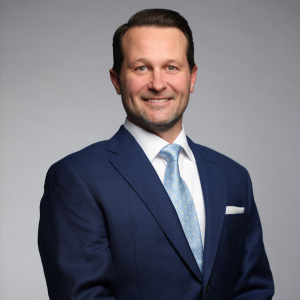Fostering effective work relationships
What type of relationships should directors of nursing and other high-level leaders strive to have with our employees, and what characteristics should we seek to include in our leadership style? By taking a look at an all-time star leader, we can gain insight into what works.
Herb Kelleher served as CEO of Southwest Airlines for almost three decades and remained chairman after stepping down as CEO in 2001. His philosophy was to treat employees as number one “because the way you treat your employees is the way they will treat your customers.” When interviewed by Associated Press writer Karen Schwartz, he advised others to “Treat your company as a service organization…do whatever it takes, and always practice the Golden Rule, internally and externally.”
Kelleher was voted by Fortune as one of the top 10 best CEOs in the United States, but his greatest recognition came on Bosses’ Day in 1994, when his 16,000 employees raised $60,000 to place a full-page advertisement in USA Today to thank him for his efforts. The ad read:
For remembering every one of our names
For supporting the Ronald McDonald House
For helping load baggage on Thanksgiving
For giving everyone a kiss (and we mean everyone)
For listening
For running the only profitable major airline
For singing at our holiday party
For singing only once a year
For letting us wear shorts and sneakers to work
For golfing at the LUV Classic with only one club
For out-talking Sam Donaldson
For riding your Harley Davidson into Southwest headquarters
For being a friend, not just a boss
According to author Raymond Yeh, one of Kelleher’s greatest characteristics is humility. He treats each person as an equal, and believes it is very important to value people as individuals. His employees say he has an open-door policy that makes him truly accessible and makes them feel comfortable going in. He is a man who displays passion for his work that inspires others to do the same. He believes in the all-encompassing principle of making a difference, and instills that in his employees. As a result they believe their company exists not merely to make a profit, but for a purpose, and they have a cause, not a career. Kelleher encourages everyone to celebrate milestones such as people with big hearts, heroes, and unusual events as a way to remind them all that they are a winning team that considers love, fun, play, and celebrations to be part of a typical day at work.
Authors Ben McConnell and Jackie Huba say Kelleher is well known for flying on Southwest planes in order to talk with customers and employees, asking how Southwest is doing, observing for inconsistencies, and looking for trends. One frequent flyer reported sitting next to Kelleher three times in a 10-year period. In 1997, Kelleher commented in an article for the Peter F. Drucker Foundation, “Customers are like a force of nature. You can’t fool them, and you ignore them at your own peril.”
Lessons learned
What then can we learn from Herb Kelleher’s leadership style? Author Paul Beeston distilled Kelleher’s leadership style into a Belief Model for Leadership that includes the following key ideas:
Find humor in tense moments
Celebrate everything
Respond to feedback
See that communication is open and flowing through all departments
Be honest and consistent in communication
Give people ownership
Share your purpose, vision, and values
Recognize and encourage individuality
Be prepared
Make heroes
Show gratitude
Forgive and forget-separate the action from the actor
Mix with the troops
Treat everyone equally-all have a part to play in making the company successful
Choose service to others over self interest
Train for skill, hire for spirit
Kelleher has learned how to foster positive relationships with his employees. When analyzing our own leadership style, we must acknowledge that relationships are the glue that keeps our team together. Every employee experiences interactions with many people while performing assigned work. The question is, will those interactions be successful, or will they result in a failure to connect with others? John Maxwell, in his book Relationships 101, identified five characteristics that are necessary for successful relationships:
1. Respect. The foundation of all relationships is respect in which value is placed on the other person. From the very first interaction it is important for a leader to treat others in ways that communicate they are valued.
2. Shared experiences. While respect is the foundation for relationships, the connectedness that develops relationships grows through shared experiences over time. When team members have worked through difficulties together, they naturally become more committed to each other. This link is missing when high turnover causes the team to lose members or leaders so that each year a significant part of the team is new and has not experienced the closeness of working through problems with the others.
3. Trust. As respect is demonstrated and a history of shared experiences builds, trust develops. Without trust it is impossible to have effective relationships.
4. Reciprocity. Relationships that succeed include give and take. Teammates recognize that at times one person gives and the other receives, and at other times that flow will be reversed. Teams are built on the ability to look out for each other and to see that each others’ needs are met.
5. Mutual enjoyment. A team that is connected experiences satisfaction from working together, even when facing unpleasant tasks.
In reality, just about everything that happens in our settings depends on teamwork and involvement with other people. This involvement is only successful if we connect with those on our team and they connect with each other. What most team members want is to be listened to and respected for who they are and what they know. Nick Heap, a researcher and facilitator of development and change, believes there are several keys to building effective relationships between team members. They include:
Learn to listen effectively, and without judging. Effective listening helps us understand others. Just as we experience increased sense of worth when someone listens to us, so do others when we listen without judging. When we judge, we create distance and defensiveness in the other person.
Meet with others informally. Informal settings help everyone feel more relaxed so they are better able to speak about what they think is important for us to know.
Develop a culture where others can express their thoughts and feelings. Unexpressed feelings get in the way of relationship connection.
By studying the philosophy of successful leaders like Herb Kelleher, and by listening to the wisdom of motivational speakers like John Maxwell and Nick Heap, we can gain valuable insights that will transform how we lead our team and relate to our customers. Drawing from lessons shared by others empowers us to foster effective relationships in our workplace and become the best, most inspiring leaders we can be.
For more information, go to https://www.bwrehab.com. To send your comments to the editor, e-mail mhrehocik@iadvanceseniorcare.com.
Resources
- Beeston P. Belief model for the leadership of Herb Kelleher. (Southwest Airlines). Available at: https://www.mission-coach.co.uk.
- Heap N. Building effective relationships that work. Available at: https://homepage.ntlworld.com
- Maxwell J. Relationships 101. Nashville Tenn.:Thomas Nelson, Inc., 2003.
- McConnell B, Huba J. The wild turkey. Available at: https://creatingcustomerevangelists.com.
- Schwartz K. Tangy touch in the sky. Available at: https://archive.southcoasttoday.com.daily.11-96/11-17-96.m10bu066.htm.
- Yeh R. Herb Kelleher: Making a difference while having fun. Available at https://www.businessknowhow.com.
I Advance Senior Care is the industry-leading source for practical, in-depth, business-building, and resident care information for owners, executives, administrators, and directors of nursing at assisted living communities, skilled nursing facilities, post-acute facilities, and continuing care retirement communities. The I Advance Senior Care editorial team and industry experts provide market analysis, strategic direction, policy commentary, clinical best-practices, business management, and technology breakthroughs.
I Advance Senior Care is part of the Institute for the Advancement of Senior Care and published by Plain-English Health Care.
Related Articles
Topics: Articles , Facility management , Leadership











